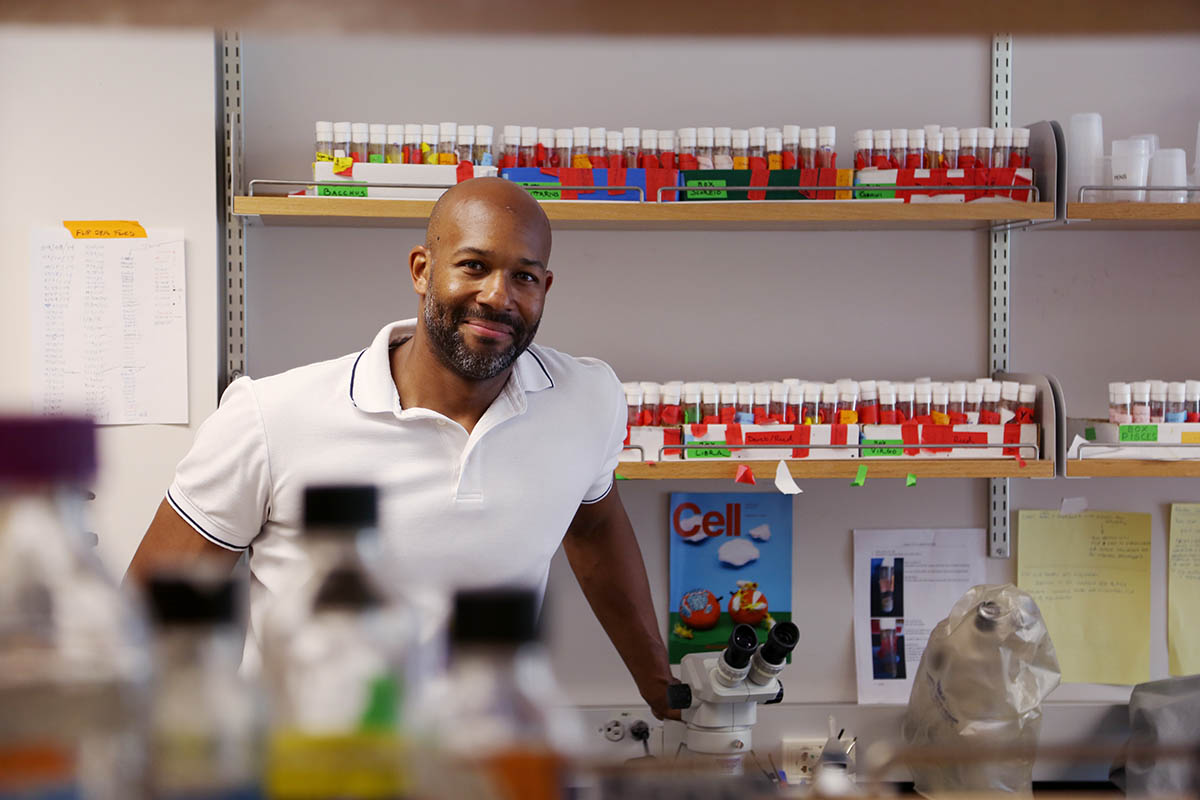The Shape of Things To Come
Prof. Derek Applewhite and students in his Reed College lab investigate how cells get their structure.
As bio majors know, cells are not just blobs of goo. In fact, they come in a fantastic range of shapes, from the diabolical corkscrew of the bacteria responsible for Lyme disease to the intricate branching of the neurons in your brain. These shapes don’t emerge by accident—they depend on a structure known as the cytoskeleton, a network of filaments which give shape to the cell, somewhat like the way tentpoles give shape to a tent.
The cytoskeleton is regulated by a complex interplay of genes that are switched on and off during different phases of development as the cell undergoes morphogenesis—the process of changing shape.
Prof. Derek Applewhite [biology] and students in his lab have been working to better understand how the cytoskeleton is regulated. One aspect of this research is focused on how cells contract. A protein known as flapwing is known to inhibit cell contractility, but the mechanism by which it does this remains unclear. Andy Zhao ’22 hypothesized that the presence of another protein, moesin, might hold the clue. He set out to investigate by depleting fruit-fly cells of their natural moesin and then replacing it with with a mutant version. Sure enough, the mutant moesin interfered with the cells’ ability to contract properly. The next step: figure out if the effect is due to direct antagonism or indirect inhibition.
Elle Oberweis-Manion ’23 focused on apical constriction, the process which turns round cells into apical (wedge-shaped) cells. Tiled together in their millions, these apical cells yield a convex structure that can ultimately join up with itself to create a tube—the fundamental organizing principle of all higher forms of life.
Elle investigated the role of a family of proteins known as septins on the folded-gastrulation signaling pathway, which regulates apical constriction by manipulating the molecular motor protein non-muscle myosin II.
Tags: Academics, Awards & Achievements, Professors, Research, Students, Thesis
